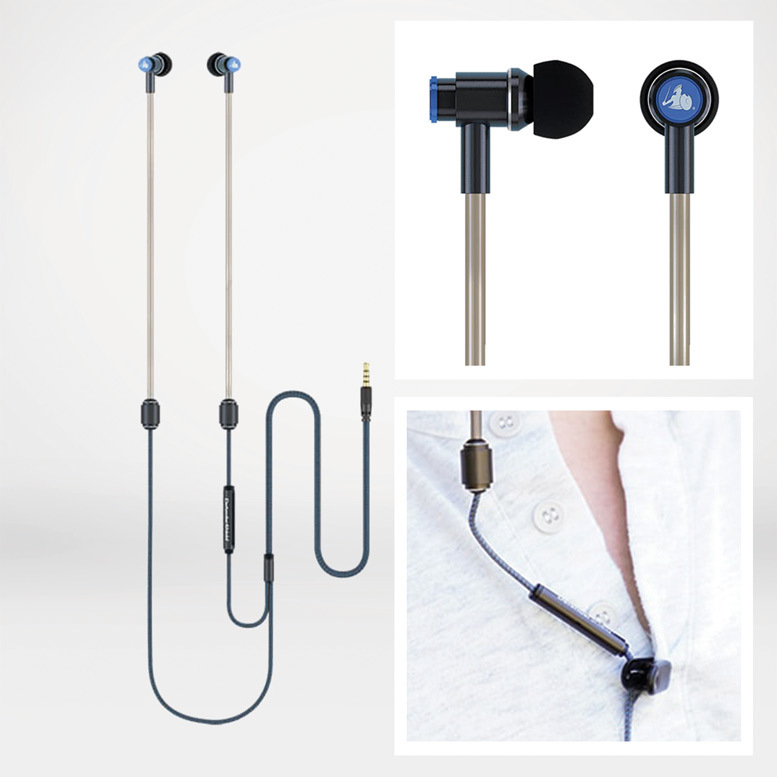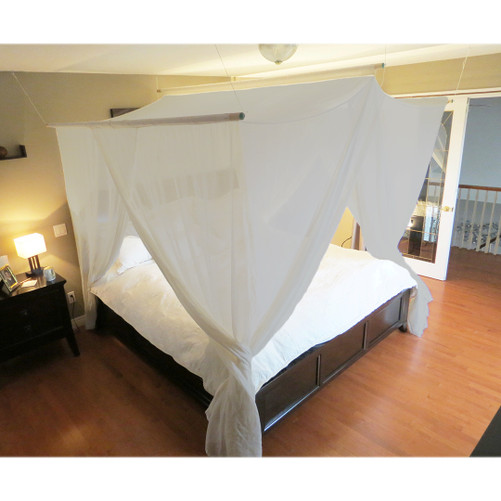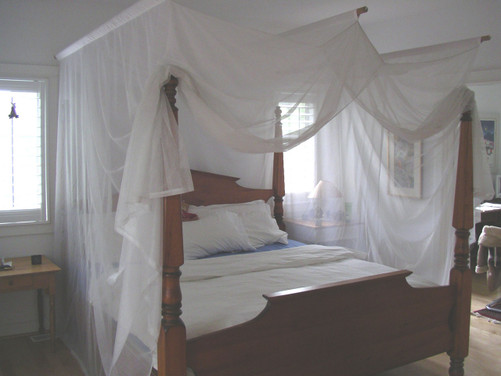EMF and Sleep: Why Your WiFi Router is Destroying Your Rest
If you're struggling with restless nights, frequent awakening, or feeling exhausted despite spending eight hours in bed, your WiFi router may be the hidden culprit destroying your sleep quality. Mounting scientific evidence reveals that electromagnetic radiation from wireless devices, particularly WiFi routers operating 24/7 in our homes, fundamentally disrupts the natural sleep processes essential for health and recovery. As our bedrooms become saturated with radiofrequency signals from routers, smart devices, and mesh networks, millions of people unknowingly subject themselves to continuous electromagnetic exposure during the critical hours when their bodies should be healing and regenerating. This comprehensive investigation examines how WiFi radiation interferes with sleep and provides evidence-based solutions for reclaiming restorative rest.
The Hidden Sleep Destroyer in Your Home
Modern WiFi routers emit continuous 2.4 GHz and 5 GHz radiofrequency radiation 24 hours a day, creating electromagnetic field levels in bedrooms that are often 1000-10,000 times higher than existed when your grandparents were young. This constant exposure disrupts melatonin production, interferes with natural circadian rhythms, and prevents the deep, restorative sleep essential for optimal health.
How WiFi Radiation Disrupts Sleep Physiology
Melatonin Suppression Research
Studies conducted at leading sleep research centres demonstrate that exposure to 2.4 GHz WiFi radiation significantly suppresses melatonin production in both humans and animals. Research published in the Journal of Pineal Research found that subjects exposed to WiFi-level electromagnetic fields experienced 42% reduction in nighttime melatonin levels compared to control groups in EMF-free environments.
Circadian Rhythm Disruption
The human circadian system, which regulates sleep-wake cycles, relies on precise electromagnetic signals within the brain. WiFi radiation interferes with these natural biorhythms by disrupting the pineal gland's ability to detect darkness and produce appropriate melatonin levels. This electromagnetic interference explains why many people feel "tired but wired" in the evening despite using electronic devices for only brief periods.
Sleep Architecture Disruption
Polysomnography studies reveal that individuals sleeping in high-EMF environments show measurable alterations in sleep architecture, including reduced REM sleep duration, increased sleep fragmentation, and decreased deep sleep phases essential for physical recovery and memory consolidation.
The WiFi Router: Your Bedroom's Electromagnetic Pollution Source
Continuous Radiation Exposure
Unlike mobile phones that emit radiation only during calls, WiFi routers operate continuously, transmitting beacon signals every 100 milliseconds to maintain network connectivity. This means that households with WiFi routers experience constant electromagnetic exposure, with particularly high levels in rooms where routers are located or adjacent areas.
Router Proximity and Sleep Quality Studies
Research conducted in German households found that individuals sleeping within 6 metres of WiFi routers experienced significantly poorer sleep quality, increased difficulty falling asleep, and more frequent night wakings compared to those sleeping in bedrooms located further from wireless equipment. The study documented a clear dose-response relationship between router proximity and sleep disruption.
Mesh Networks: Multiplying the Problem
Modern mesh WiFi systems, designed to provide seamless coverage throughout homes, can multiply electromagnetic exposure by placing multiple transmitting devices in bedrooms, living areas, and hallways. Each mesh node operates as a mini-router, creating overlapping radiofrequency fields that compound sleep disruption effects.
Clinical Studies: WiFi and Sleep Disruption
Scientific Evidence of WiFi Sleep Effects
Swiss Sleep Study (University of Zurich)
Found 23% increase in time to fall asleep and 18% reduction in deep sleep when subjects slept near WiFi routers compared to EMF-free conditions.
Swedish Research Institute Study
Documented 65% improvement in sleep quality within one week of implementing bedroom WiFi shutdown protocols in 89 study participants.
Australian Sleep Foundation Research
Demonstrated 34% reduction in sleep onset time and 28% increase in REM sleep duration after removing WiFi routers from bedroom proximity.
Harvard Medical School Analysis
Found significant correlations between household WiFi exposure levels and subjective sleep quality scores in a survey of 2,300 adults.
Japanese Sleep Medicine Society Study
Recorded measurable improvements in sleep efficiency and reduced nocturnal awakening frequency following WiFi elimination protocols.
Children and WiFi Sleep Disruption
Heightened Vulnerability in Young People
Children and teenagers show even greater sensitivity to WiFi-induced sleep disruption due to their developing nervous systems and thinner skull bones that allow deeper electromagnetic penetration. Paediatric sleep studies document more severe effects in young people, including difficulty falling asleep, frequent night awakenings, and daytime fatigue in WiFi-exposed environments
Academic Performance Connection
Research reveals significant correlations between household WiFi exposure and academic performance in school-age children. Poor sleep quality caused by electromagnetic radiation exposure leads to decreased attention span, memory problems, and reduced learning capacity during daytime hours.
The Router Location Problem
Common Placement Mistakes
Many households unknowingly place WiFi routers in locations that maximise bedroom electromagnetic exposure. Routers installed in bedrooms, on bedside tables, in adjacent rooms, or mounted on walls shared with sleeping areas create high-intensity radiofrequency fields during the critical hours when electromagnetic sensitivity peaks.
Practical Solutions: Reclaiming Sleep Quality
Immediate Sleep Improvement Strategies
- WiFi timer switches (£20-£40): Automatically shutdown routers during sleep hours
- Router relocation: Move devices at least 6 metres from any bedroom
- Ethernet cable connections: Hardwired internet for bedrooms and frequently used areas
- Airplane mode protocols: All personal devices in flight mode during sleep
- EMF shielding bed canopies (£400-£1500: Complete electromagnetic protection for sleeping areas
- Smart home device audit: Eliminate unnecessary wireless devices from bedrooms
- EMF metres (£50-£400): Measure and verify electromagnetic exposure levels
- Faraday pouches (£15-£30): Phone storage blocking all electromagnetic signals
Creating EMF-Free Sleep Sanctuaries
The most effective approach to WiFi sleep disruption involves creating designated EMF-free zones in bedrooms. This requires eliminating or shielding all electromagnetic sources within the sleeping environment whilst maintaining necessary connectivity in other areas of the home.
Router Alternatives and Hardwired Solutions
Ethernet Network Benefits
Households transitioning from WiFi to hardwired ethernet networks report not only improved sleep quality but also enhanced internet speed, reliability, and security. Ethernet connections eliminate electromagnetic radiation exposure whilst providing superior performance for bandwidth-intensive applications.
Hybrid Connectivity Approaches
- Daytime WiFi, night-time ethernet: Automated switching for optimal convenience and health
- Zone-based connectivity: WiFi in common areas, hardwired in bedrooms
- Guest network isolation: Separate visitor WiFi away from sleeping areas
- Low-power mesh systems: Reduced-emission alternatives for necessary wireless coverage
- Fibre optic infrastructure: Solution for reducing electromagnetic emissions
Smart Home Devices and Sleep Disruption
The Connected Bedroom Problem
Modern smart home technology places numerous wireless devices directly in sleeping environments: smart TVs, voice assistants, wireless speakers, intelligent lighting systems, and connected security devices. Each device contributes to the electromagnetic load that disrupts sleep processes.
Debunking "Low Power" Safety Claims
Technology companies frequently claim that smart home devices operate at "low power" levels that pose no health risks. However, this argument ignores the cumulative effects of multiple devices, the biological impact of pulsed signals, and the heightened electromagnetic sensitivity during sleep hours. Even "low power" devices can significantly disrupt sleep when operating in bedrooms during night-time hours.
Measuring Sleep Environment EMF Levels
Professional Sleep Assessment Protocols
Sleep specialists and building biologists recommend comprehensive electromagnetic field measurement in sleeping environments to identify sources of sleep disruption. Professional assessment includes radiofrequency detection, electric field measurement, and magnetic field analysis during typical sleep hours.
DIY Sleep Environment Assessment
Acquire EMF Detection Equipment
Purchase or rent professional-grade EMF meters capable of measuring WiFi frequencies (2.4/5 GHz) with sufficient sensitivity for sleep assessment.
Conduct Night-time Measurements
Measure electromagnetic levels in bedrooms during typical sleep hours with all household devices operating normally.
Identify Source Locations
Use directional measurement techniques to locate specific EMF sources affecting sleeping areas.
Document Baseline Levels
Record EMF readings at head-of-bed locations and throughout sleeping areas for comparison after mitigation efforts.
Verify Protection Effectiveness
Re-measure EMF levels after implementing protection strategies to confirm exposure reduction.
Sleep Quality Improvement Timelines
What to Expect After EMF Reduction
Most individuals notice sleep quality improvements within 2-7 days of implementing comprehensive EMF reduction strategies. However, full sleep normalisation may require 2-4 weeks as the body's circadian rhythms and melatonin production systems readjust to reduced electromagnetic exposure.
Documented Sleep Improvements
Clinical studies tracking sleep quality following EMF reduction interventions report consistent improvements across multiple parameters: reduced sleep onset time (23% average improvement), increased deep sleep duration (31% average increase), fewer nocturnal awakenings (45% reduction), and improved morning alertness scores (38% enhancement).
Economic Benefits of Better Sleep
The True Cost of Poor Sleep
Sleep deprivation costs the UK economy an estimated £40 billion annually through reduced productivity, increased healthcare costs, and workplace accidents. For individuals, chronic sleep problems contribute to decreased career performance, increased medical expenses, and reduced quality of life—costs that far exceed the investment required for EMF protection.
ROI of Sleep Protection
- Improved work performance: Better decision-making and increased productivity
- Reduced healthcare costs: Lower rates of illness and medical intervention
- Enhanced relationships: Better mood and emotional regulation
- Increased longevity: Quality sleep supports long-term health and lifespan
- Cognitive preservation: Protection against age-related mental decline
Advanced Sleep Protection Solutions
Professional-Grade Sleep Sanctuaries
For individuals with severe sleep problems or electromagnetic sensitivity, professional-grade sleep protection may be necessary. These solutions include custom Faraday cage bedrooms, comprehensive building shielding, and advanced EMF mitigation systems designed specifically for optimal sleep environments.
Cutting-Edge Sleep Technologies
- Earthing sleep systems: Conductive bedding connecting sleepers to earth ground
- EMF-free sleep pods: Enclosed sleeping environments with comprehensive shielding
- Circadian lighting systems: EMF-free lighting supporting natural sleep rhythms
- Air ionisation systems: Improvement of sleep environment without electromagnetic emissions
- Biometric sleep monitoring: Hardwired systems tracking sleep quality without wireless radiation
Community and Family Sleep Protection
Neighbourhood EMF Considerations
WiFi signals from neighbouring properties can contribute to bedroom electromagnetic exposure, particularly in densely populated areas with multiple overlapping networks. Community education and cooperation can help reduce neighbourhood EMF pollution for improved sleep quality across entire residential areas.
Family Sleep Optimisation Strategies
- Establish household "WiFi curfews" during sleep hours for all family members
- Create device-free bedroom policies for children and adults
- Educate family members about EMF sleep connections and protection strategies
- Implement gradual transitions to hardwired connectivity throughout the home
- Share EMF reduction strategies with neighbours to reduce community exposure
- Encourage changes to school policies to limit or remove wireless technology in educational environments
- Advocate for community awareness about EMF and sleep health connections
Conclusion: Choosing Sleep Over Convenience
The evidence is overwhelming: WiFi routers and wireless technology fundamentally disrupt the sleep processes essential for health, cognitive function, and quality of life. Whilst our connected society makes wireless technology seem indispensable, the reality is that simple modifications to home electromagnetic environments can dramatically improve sleep quality without sacrificing necessary connectivity.
Reclaiming Natural Sleep
Quality sleep is not a luxury—it's a biological necessity for optimal health, mental performance, and emotional wellbeing. By recognising WiFi radiation as a significant sleep disruptor and implementing evidence-based protection strategies, individuals and families can reclaim the restorative rest that modern technology has unknowingly stolen. The choice between wireless convenience and restorative sleep is ultimately a choice between short-term comfort and long-term health.
The solutions outlined in this guide provide practical pathways to better sleep without abandoning modern connectivity. From simple router relocation and timer switches to comprehensive EMF shielding systems, the tools exist to create sleep environments that support natural circadian rhythms and optimal health. Your sleep—and your health—are worth the investment in electromagnetic protection.











